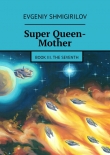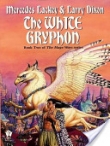
Текст книги "The British Study Edition of the Urantia Papers"
Автор книги: Tigran Aivazian
Жанр:
Религия
сообщить о нарушении
Текущая страница: 78 (всего у книги 295 страниц)
48:8.1 From the time of graduation from the mansion worlds to the attainment of spirit status in the superuniverse career, ascending mortals are denominated morontia progressors. Your passage through this wonderful borderland life will be an unforgettable experience, a charming memory. It is the evolutionary portal to spirit life and the eventual attainment of creature perfection by which ascenders achieve the goal of time – the finding of God on Paradise.
48:8.2 There is a definite and divine purpose in all this morontia and subsequent spirit scheme of mortal progression, this elaborate universe training school for ascending creatures. It is the design of the Creators to afford the creatures of time a graduated opportunity to master the details of the operation and administration of the grand universe, and this long course of training is best carried forward by having the surviving mortal climb up gradually and by actual participation in every step of the ascent.
48:8.3 The mortal-survival plan has a practical and serviceable objective; you are not the recipients of all this divine labour and painstaking training only that you may survive just to enjoy endless bliss and eternal ease. There is a goal of transcendent service concealed beyond the horizon of the present universe age. If the Gods designed merely to take you on one long and eternal joy excursion, they certainly would not so largely turn the whole universe into one vast and intricate practical training school, requisition a substantial part of the celestial creation as teachers and instructors, and then spend ages upon ages piloting you, one by one, through this gigantic universe school of experiential training. The furtherance of the scheme of mortal progression seems to be one of the chief businesses of the present organized universe, and the majority of innumerable orders of created intelligences are either directly or indirectly engaged in advancing some phase of this progressive perfection plan.
48:8.4 In traversing the ascending scale of living existence from mortal man to the Deity embrace, you actually live the very life of every possible phase and stage of perfected creature existence within the limits of the present universe age. From mortal man to Paradise finaliter embraces all that now can be – encompasses everything presently possible to the living orders of intelligent, perfected finite creature beings. If the future destiny of the Paradise finaliters is service in new universes now in the making, it is assured that in this new and future creation there will be no created orders of experiential beings whose lives will be wholly different from those which mortal finaliters have lived on some world as a part of their ascending training, as one of the stages of their agelong progress from animal to angel and from angel to spirit and from spirit to God.
48:8.5 [Presented by an Archangel of Nebadon.]
PAPER № 49
THE INHABITED WORLDS
Melchizedek
49:0.1 All mortal-inhabited worlds are evolutionary in origin and nature. These spheres are the spawning ground, the evolutionary cradle, of the mortal races of time and space. Each unit of the ascendant life is a veritable training school for the stage of existence just ahead, and this is true of every stage of man’s progressive Paradise ascent; just as true of the initial mortal experience on an evolutionary planet as of the final universe headquarters school of the Melchizedeks, a school which is not attended by ascending mortals until just before their translation to the regime of the superuniverse and the attainment of first-stage spirit existence.
49:0.2 ¶ All inhabited worlds are basically grouped for celestial administration into the local systems, and each of these local systems is limited to about 1,000 evolutionary worlds. This limitation is by the decree of the Ancients of Days, and it pertains to actual evolutionary planets whereon mortals of survival status are living. Neither worlds finally settled in light and life nor planets in the prehuman stage of life development are reckoned in this group.
49:0.3 ¶ Satania itself is an unfinished system containing only 619 inhabited worlds. Such planets are numbered serially in accordance with their registration as inhabited worlds, as worlds inhabited by will creatures. Thus was Urantia given the number 606 of Satania, meaning the 606th world in this local system on which the long evolutionary life process culminated in the appearance of human beings. There are 36 uninhabited planets nearing the life-endowment stage, and several are now being made ready for the Life Carriers. There are nearly 200 spheres which are evolving so as to be ready for life implantation within the next few million years.
49:0.4 Not all planets are suited to harbour mortal life. Small ones having a high rate of axial revolution are wholly unsuited for life habitats. In several of the physical systems of Satania the planets revolving around the central sun are too large for habitation, their great mass occasioning oppressive gravity. Many of these enormous spheres have satellites, sometimes a half dozen or more, and these moons are often in size very near that of Urantia, so that they are almost ideal for habitation.
49:0.5 The oldest inhabited world of Satania, world number 1, is Anova, one of the 44 satellites revolving around an enormous dark planet but exposed to the differential light of three neighbouring suns. Anova is in an advanced stage of progressive civilization.
1. THE PLANETARY LIFE49:1.1 The universes of time and space are gradual in development; the progression of life – terrestrial or celestial – is neither arbitrary nor magical. Cosmic evolution may not always be understandable (predictable), but it is strictly nonaccidental.
49:1.2 The biologic unit of material life is the protoplasmic cell, the communal association of chemical, electrical, and other basic energies. The chemical formulas differ in each system, and the technique of living cell reproduction is slightly different in each local universe, but the Life Carriers are always the living catalysers who initiate the primordial reactions of material life; they are the instigators of the energy circuits of living matter.
49:1.3 All the worlds of a local system disclose unmistakable physical kinship; nevertheless, each planet has its own scale of life, no two worlds being exactly alike in plant and animal endowment. These planetary variations in the system life types result from the decisions of the Life Carriers. But these beings are neither capricious nor whimsical; the universes are conducted in accordance with law and order. The laws of Nebadon are the divine mandates of Salvington, and the evolutionary order of life in Satania is in consonance with the evolutionary pattern of Nebadon.
49:1.4 Evolution is the rule of human development, but the process itself varies greatly on different worlds. Life is sometimes initiated in one centre, sometimes in three, as it was on Urantia. On the atmospheric worlds it usually has a marine origin, but not always; much depends on the physical status of a planet. The Life Carriers have great latitude in their function of life initiation.
49:1.5 In the development of planetary life the vegetable form always precedes the animal and is quite fully developed before the animal patterns differentiate. All animal types are developed from the basic patterns of the preceding vegetable kingdom of living things; they are not separately organized.
49:1.6 The early stages of life evolution are not altogether in conformity with your present-day views. Mortal man is not an evolutionary accident. There is a precise system, a universal law, which determines the unfolding of the planetary life plan on the spheres of space. Time and the production of large numbers of a species are not the controlling influences. Mice reproduce much more rapidly than elephants, yet elephants evolve more rapidly than mice.
49:1.7 The process of planetary evolution is orderly and controlled. The development of higher organisms from lower groupings of life is not accidental. Sometimes evolutionary progress is temporarily delayed by the destruction of certain favourable lines of life plasm carried in a selected species. It often requires ages upon ages to recoup the damage occasioned by the loss of a single superior strain of human heredity. These selected and superior strains of living protoplasm should be jealously and intelligently guarded when once they make their appearance. And on most of the inhabited worlds these superior potentials of life are valued much more highly than on Urantia.
2. PLANETARY PHYSICAL TYPES49:2.1 There is a standard and basic pattern of vegetable and animal life in each system. But the Life Carriers are oftentimes confronted with the necessity of modifying these basic patterns to conform to the varying physical conditions which confront them on numerous worlds of space. They foster a generalized system type of mortal creature, but there are seven distinct physical types as well as thousands upon thousands of minor variants of these 7 outstanding differentiations:
49:2.2 1. Atmospheric types.
49:2.3 2. Elemental types.
49:2.4 3. Gravity types.
49:2.5 4. Temperature types.
49:2.6 5. Electric types.
49:2.7 6. Energizing types.
49:2.8 7. Unnamed types.
49:2.9 ¶ The Satania system contains all of these types and numerous intermediate groups, although some are very sparingly represented.
49:2.10 1. The atmospheric types. The physical differences of the worlds of mortal habitation are chiefly determined by the nature of the atmosphere; other influences which contribute to the planetary differentiation of life are relatively minor.
49:2.11 The present atmospheric status of Urantia is almost ideal for the support of the breathing type of man, but the human type can be so modified that it can live on both the superatmospheric and the subatmospheric planets. Such modifications also extend to the animal life, which differs greatly on the various inhabited spheres. There is a very great modification of animal orders on both the sub– and the superatmospheric worlds.
49:2.12 Of the atmospheric types in Satania, about 2.5% are subbreathers, about 5% superbreathers, and over 91% are mid-breathers, altogether accounting for 98.5% of the Satania worlds.
49:2.13 Beings such as the Urantia races are classified as mid-breathers; you represent the average or typical breathing order of mortal existence. If intelligent creatures should exist on a planet with an atmosphere similar to that of your near neighbour, Venus, they would belong to the superbreather group, while those inhabiting a planet with an atmosphere as thin as that of your outer neighbour, Mars, would be denominated subbreathers.
49:2.14 If mortals should inhabit a planet devoid of air, like your moon, they would belong to the separate order of nonbreathers. This type represents a radical or extreme adjustment to the planetary environment and is separately considered. Nonbreathers account for the remaining 1.5% of Satania worlds.
49:2.15 2. The elemental types. These differentiations have to do with the relation of mortals to water, air, and land, and there are four distinct species of intelligent life as they are related to these habitats. The Urantia races are of the land order.
49:2.16 It is quite impossible for you to envisage the environment which prevails during the early ages of some worlds. These unusual conditions make it necessary for the evolving animal life to remain in its marine nursery habitat for longer periods than on those planets which very early provide a hospitable land-and-atmosphere environment. Conversely, on some worlds of the superbreathers, when the planet is not too large, it is sometimes expedient to provide for a mortal type which can readily negotiate atmospheric passage. These air navigators sometimes intervene between the water and land groups, and they always live in a measure upon the ground, eventually evolving into land dwellers. But on some worlds, for ages they continue to fly even after they have become land-type beings.
49:2.17 It is both amazing and amusing to observe the early civilization of a primitive race of human beings taking shape, in one case, in the air and treetops and, in another, midst the shallow waters of sheltered tropic basins, as well as on the bottom, sides, and shores of these marine gardens of the dawn races of such extraordinary spheres. Even on Urantia there was a long age during which primitive man preserved himself and advanced his primitive civilization by living for the most part in the treetops as did his earlier arboreal ancestors. And on Urantia you still have a group of diminutive mammals (the bat family) that are air navigators, and your seals and whales, of marine habitat, are also of the mammalian order.
49:2.18 In Satania, of the elemental types, 7% are water, 10% air, 70% land, and 13% combined land-and-air types. But these modifications of early intelligent creatures are neither human fishes nor human birds. They are of the human and prehuman types, neither superfishes nor glorified birds but distinctly mortal.
49:2.19 3. The gravity types. By modification of creative design, intelligent beings are so constructed that they can freely function on spheres both smaller and larger than Urantia, thus being, in measure, accommodated to the gravity of those planets which are not of ideal size and density.
49:2.20 The various planetary types of mortals vary in height, the average in Nebadon being a trifle under 2.1 m. Some of the larger worlds are peopled with beings who are only about 76 cm in height. Mortal stature ranges from here on up through the average heights on the average-sized planets to around 3 m on the smaller inhabited spheres. In Satania there is only one race under 1.2 m in height. 20% of the Satania inhabited worlds are peopled with mortals of the modified gravity types occupying the larger and the smaller planets.
49:2.21 4. The temperature types. It is possible to create living beings who can withstand temperatures both much higher and much lower than the life range of the Urantia races. There are five distinct orders of beings as they are classified with reference to heat-regulating mechanisms. In this scale the Urantia races are number three. 30% of Satania worlds are peopled with races of modified temperature types. 12% belong to the higher temperature ranges, 18% to the lower, as compared with Urantians, who function in the mid-temperature group.
49:2.22 5. The electric types. The electric, magnetic, and electronic behaviour of the worlds varies greatly. There are ten designs of mortal life variously fashioned to withstand the differential energy of the spheres. These ten varieties also react in slightly different ways to the chemical rays of ordinary sunlight. But these slight physical variations in no way affect the intellectual or the spiritual life.
49:2.23 Of the electric groupings of mortal life, almost 23% belong to class number 4, the Urantia type of existence. These types are distributed as follows: number 1, 1%; number 2, 2%; number 3, 5%; number 4, 23%; number 5, 27%; number 6, 24%; number 7, 8%; number 8, 5%; number 9, 3%; number 10, 2% – in whole percentages.
49:2.24 6. The energizing types. Not all worlds are alike in the manner of taking in energy. Not all inhabited worlds have an atmospheric ocean suited to respiratory exchange of gases, such as is present on Urantia. During the earlier and the later stages of many planets, beings of your present order could not exist; and when the respiratory factors of a planet are very high or very low, but when all other prerequisites to intelligent life are adequate, the Life Carriers often establish on such worlds a modified form of mortal existence, beings who are competent to effect their life-process exchanges directly by means of light-energy and the firsthand power transmutations of the Master Physical Controllers.
49:2.25 There are six differing types of animal and mortal nutrition: The subbreathers employ the first type of nutrition, the marine dwellers the second, the mid-breathers the third, as on Urantia. The superbreathers employ the fourth type of energy intake, while the nonbreathers utilize the fifth order of nutrition and energy. The sixth technique of energizing is limited to the midway creatures.
49:2.26 7. The unnamed types. There are numerous additional physical variations in planetary life, but all of these differences are wholly matters of anatomical modification, physiologic differentiation, and electrochemical adjustment. Such distinctions do not concern the intellectual or the spiritual life.
3. WORLDS OF THE NONBREATHERS49:3.1 The majority of inhabited planets are peopled with the breathing type of intelligent beings. But there are also orders of mortals who are able to live on worlds with little or no air. Of the Orvonton inhabited worlds this type amounts to less than 7%. In Nebadon this percentage is less than three. In all Satania there are only nine such worlds.
49:3.2 There are so very few of the nonbreather type of inhabited worlds in Satania because this more recently organized section of Norlatiadek still abounds in meteoric space bodies; and worlds without a protective friction atmosphere are subject to incessant bombardment by these wanderers. Even some of the comets consist of meteor swarms, but as a rule they are disrupted smaller bodies of matter.
49:3.3 Millions upon millions of meteorites enter the atmosphere of Urantia daily, coming in at the rate of almost 320 km/s. On the nonbreathing worlds the advanced races must do much to protect themselves from meteor damage by making electrical installations which operate to consume or shunt the meteors. Great danger confronts them when they venture beyond these protected zones. These worlds are also subject to disastrous electrical storms of a nature unknown on Urantia. During such times of tremendous energy fluctuation the inhabitants must take refuge in their special structures of protective insulation.
49:3.4 Life on the worlds of the nonbreathers is radically different from what it is on Urantia. The nonbreathers do not eat food or drink water as do the Urantia races. The reactions of the nervous system, the heat-regulating mechanism, and the metabolism of these specialized peoples are radically different from such functions of Urantia mortals. Almost every act of living, aside from reproduction, differs, and even the methods of procreation are somewhat different.
49:3.5 On the nonbreathing worlds the animal species are radically unlike those found on the atmospheric planets. The nonbreathing plan of life varies from the technique of existence on an atmospheric world; even in survival their peoples differ, being candidates for Spirit fusion. Nevertheless, these beings enjoy life and carry forward the activities of the realm with the same relative trials and joys that are experienced by the mortals living on atmospheric worlds. In mind and character the nonbreathers do not differ from other mortal types.
49:3.6 You would be more than interested in the planetary conduct of this type of mortal because such a race of beings inhabits a sphere in close proximity to Urantia.
4. EVOLUTIONARY WILL CREATURES49:4.1 There are great differences between the mortals of the different worlds, even among those belonging to the same intellectual and physical types, but all mortals of will dignity are erect animals, bipeds.
49:4.2 There are six basic evolutionary races: three primary – red, yellow, and blue; and three secondary – orange, green, and indigo. Most inhabited worlds have all of these races, but many of the three-brained planets harbour only the three primary types. Some local systems also have only these three races.
49:4.3 The average special physical-sense endowment of human beings is 12, though the special senses of the three-brained mortals are extended slightly beyond those of the one– and two-brained types; they can see and hear considerably more than the Urantia races.
49:4.4 Young are usually born singly, multiple births being the exception, and the family life is fairly uniform on all types of planets. Sex equality prevails on all advanced worlds; male and female are equal in mind endowment and spiritual status. We do not regard a planet as having emerged from barbarism so long as one sex seeks to tyrannize over the other. This feature of creature experience is always greatly improved after the arrival of a Material Son and Daughter.
49:4.5 ¶ Seasons and temperature variations occur on all sunlighted and sun-heated planets. Agriculture is universal on all atmospheric worlds; tilling the soil is the one pursuit that is common to the advancing races of all such planets.
49:4.6 Mortals all have the same general struggles with microscopic foes in their early days, such as you now experience on Urantia, though perhaps not so extensive. The length of life varies on the different planets from 25 years on the primitive worlds to near 500 on the more advanced and older spheres.
49:4.7 Human beings are all gregarious, both tribal and racial. These group segregations are inherent in their origin and constitution. Such tendencies can be modified only by advancing civilization and by gradual spiritualization. The social, economic, and governmental problems of the inhabited worlds vary in accordance with the age of the planets and the degree to which they have been influenced by the successive sojourns of the divine Sons.
49:4.8 ¶ Mind is the bestowal of the Infinite Spirit and functions quite the same in diverse environments. The mind of mortals is akin, regardless of certain structural and chemical differences which characterize the physical natures of the will creatures of the local systems. Regardless of personal or physical planetary differences, the mental life of all these various orders of mortals is very similar, and their immediate careers after death are very much alike.
49:4.9 But mortal mind without immortal spirit cannot survive. The mind of man is mortal; only the bestowed spirit is immortal. Survival is dependent on spiritualization by the ministry of the Adjuster – on the birth and evolution of the immortal soul; at least, there must not have developed an antagonism towards the Adjuster’s mission of effecting the spiritual transformation of the material mind.








